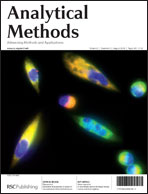This communication reports the development of a microfluidic device capable of maintaining the long-term culture of viable tissue biopsies. Tissue-based models will enable evaluation of cell–cell and cell–matrix interactions within multi-cellular systems. The device demonstrated is a prototype, fabricated with the capacity to receive biopsy samples up to 2 mm3, from various tissue sources. Presently, this system has been tested with human colorectal tissue biopsies, for periods in excess of 3 days. The response of normal colorectal tissue and neoplastic biopsies to hypoxia was assayed by the release of vascular endothelial growth factor (VEGF) into the media, which was measured off-chip. As anticipated, the hypoxia induced a greater VEGF response in the tumour biopsies than the non-malignant tissue.
You have access to this article
 Please wait while we load your content...
Something went wrong. Try again?
Please wait while we load your content...
Something went wrong. Try again?


 Please wait while we load your content...
Please wait while we load your content...